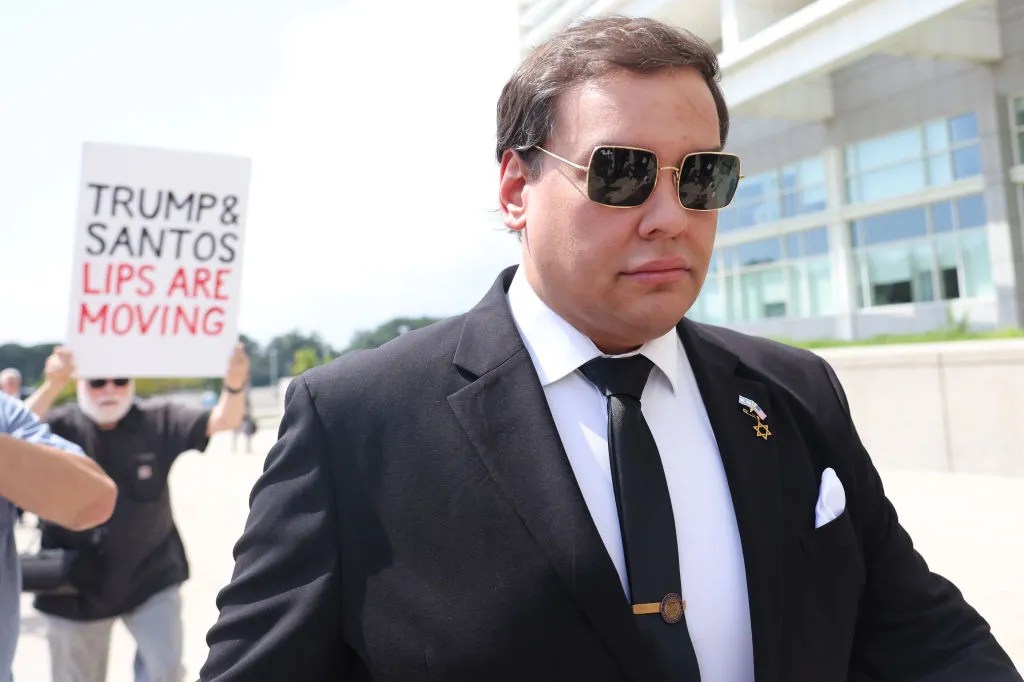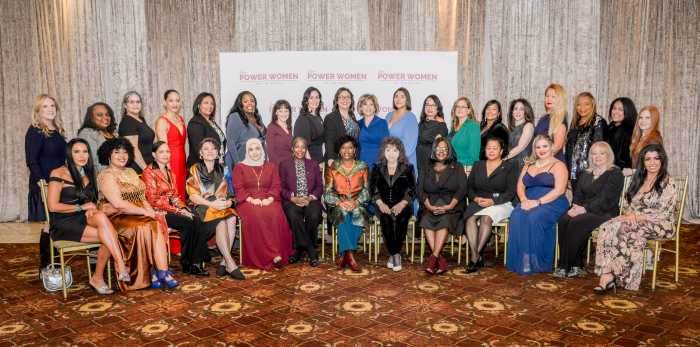NY high court says protecting careless straights Is key issue
BY ARTHUR S. LEONARD
Seizing upon an illogical argument previously embraced by the Indiana Court of Appeals, a majority of New York’s highest court ruled on July 6 that it is rational for the Legislature to have excluded same-sex couples from marriage in order to encourage heterosexuals, who might carelessly or accidentally conceive children, to marry.
The decision in Hernandez v. Robles, eagerly anticipated, was issued just five weeks after the court heard oral argument.
Contrary to some simplistic headlines in the immediate media reaction, the Court of Appeals did not rule that the state Constitution outlaws same-sex marriage. The ruling was that the Constitution does not require the state to make marriage available to same-sex couples, but that the Legislature can grant marriage rights.
The lead opinion by Judge Robert S. Smith, speaking only for himself and Judges George Bundy Smith and Susan Phillips Read, thus representing a plurality of the court, utterly failed to provide any reason why it was necessary, or even logical, to exclude same-sex couples from marrying in order to provide such an incentive to opposite-sex couples. As Chief Judge Judith Kaye wrote in her comprehensive, spirited dissent, there are “enough marriage licenses to go around.”
The third opinion in the case, by Judge Victoria Graffeo, with whom Judge George Bundy Smith also concurred, provided the fourth vote to make up a majority to reject a constitutional requirement of same-sex marriage, but her decision to concur in the judgment only, not in Judge Robert Smith’s opinion, meant that no one opinion speaks for the majority of the court.
Perhaps the speed with which the court spoke was responsible for some of the intellectual sloppiness of the majority opinions. Interestingly, the two other state high courts that are deciding same-sex marriage cases, in New Jersey and Washington State, both heard arguments long prior to the New York court, New Jersey in February and Washington well over a year ago, and neither has rushed to such a swift judgment.
The lack of a single majority opinion is slight recompense for the points on which Smith and Graffeo agree, which include not only that the state Constitution’s protection of the right to marry does not extend to same-sex couples, but also that anti-gay discrimination in state policies is to be evaluated by the least-demanding level of judicial review, the so-called rational basis test that requires the state merely to show that it bars same-sex marriage on a basis that can be defended as rational. In the hands of Judges Smith and Graffeo, the test must be qualified as so-called if the word rational is to have its usual, everyday meaning. As part of this, both Smith and Graffeo insisted that the state Constitution provides no greater protection than would the federal Constitution.
Smith’s opinion is irrational even in its mode of organization. So eager is he to begin with the ending that he prefaces his analysis with the stark declaration, “We hold that the New York Constitution does not compel recognition of marriages between members of the same sex. Whether such marriages should be recognized is a question to be addressed by the Legislature.”
Reversing the logical order in which one would conduct the analysis, he quickly brushes past the least controversial point in the case, on which even the dissent agrees—that the existing Domestic Relations statute does not allow for same-sex marriage because the Legislature that enacted it did not intend for it to do so. Smith next proceeds to take up the question whether it is rational for the Legislature to allow opposite-sex couples to marry—without stopping first to discuss whether the law should be reviewed using the rational basis test or some more demanding version of judicial review—requiring stronger defense by the state of its policy because it implicates fundamental rights or “suspect classifications.”
Smith’s “rational basis” discussion echoes the recent ruling by the Indiana Court of Appeals in Morrison v. Sadler, appalling in its bizarre rendition of vacuous stereotypes. The Indiana court theorized that while same-sex couples can only have children as a result of deliberate intention through adoption or donor insemination, opposite-sex couples can have children through carelessness, accidents (broken condoms, drunken orgies, what have you), or indirection, and thus the Legislature could rationally believe that the purpose of providing the rights and benefits of marriage should be used as an incentive to corral those careless breeders into bonds of matrimony.
Of course, Smith utterly fails to explain why not letting same-sex couples marry advances this goal of getting opposite-sex couples to do so.
Turning to an alternative rational justification, Smith embraces the peculiar reasoning of the federal court of appeals from the 11th Circuit in its recent decision upholding Florida’s ban on gay people adopting children, the unprovable but conventional assumption that children benefit more from being raised by opposite-sex married couples than by same-sex couples. Setting aside as essentially irrelevant the numerous studies showing that children raised by both kinds of couples turn out about the same, Smith insists that the absence of substantial long-term studies undermines their usefulness, and that the Legislature is free to go on imagining—applying, in his words, “the common-sense premise”—that it is protecting children by forbidding same-sex couples from marrying.
In other words, to Smith the word “rational,” when used to evaluate legislative action, includes acting out of habit or custom, even in the face of contrary evidence. A true conservative, he believes it is rational to blindly preserve existing social arrangements even when they have the effect of discriminating against a segment of society.
As Judge Kaye points out in her dissent, Smith never addresses the significant disadvantages visited upon the numerous children being raised by same-sex couples as a result of the state’s refusal to allow their parents to marry.
After deciding that the marriage law is rational, Smith turned to the question whether it should be subjected to some higher level of judicial review, called “heightened scrutiny” or “strict scrutiny.” Such review is applied when a fundamental right is at stake, or when the law discriminates based on a “suspect classification,” among which is race. Smith decided that although the right to marry is fundamental, the precedents in which that right was identified all involved opposite-sex couples, and were thus irrelevant to this case. As to suspect classification, he found that the law did not embody sex discrimination, because in his view that concept is limited to cases where a law disadvantages one sex as opposed to the other.
Smith was willing to concede that the law disadvantages gay people based on their sexual orientation. However, he noted, existing precedents did not support treating sexual orientation as a suspect classification, although in a somewhat bizarre speculation he opined that as to some other subjects it might be a suspect classification, but not as to marriage and family issues, because he had already concluded that the law was rational. (The relevant paragraphs reveal Smith’s peculiar ignorance about how courts analyze equal protection issues.)
By contrast, Graffeo contended that the marriage law does not discriminate on the basis of sexual orientation at all, for the simple reason that straight people are also forbidden from marrying members of their own sex! She said that nobody who applies for a marriage license is asked about his or her sexual orientation. But Graffeo did concede that the marriage law has a negative impact on gay people, who can marry their preferred partners. However, she found this was not subject to constitutional challenge, because she did not consider it to be intentional discrimination. The Legislature that passed the marriage law long ago assertedly had no intent to discriminate, and it is well established in constitutional jurisprudence that unintentional discrimination does not violate the equal protection requirement.
But the intent of the Legislature in 1909 seems remote from the question whether continuing to bar same-sex couples from marrying today is intentional discrimination. Since the marriage law can be amended any time the Legislature wants, it is irrational to analyze intention solely on the basis of the time of enactment. After all, the Legislature’s refusal even to give a hearing to the same-sex marriage bills pending in both houses, much less to actually vote on them, manifests a continuing intention to discriminate, as Judge Kaye observed in dissent.
Judge Kaye, on the other hand, insisted in her dissent that sexual orientation should be considered a suspect classification, which means strict scrutiny of the refusal to provide equal marriage rights to gay people—under which the marriage law is patently unconstitutional—and that the Legislature’s continuing refusal to take up the same-sex marriage proposals signals intentional discrimination.
Noting that the majority of the court concedes that the right to marry is fundamental, Kaye quotes from New York precedents specifically stating that the choice of one’s sexual partner is part of that fundamental right.
“Simply put,” she wrote, “fundamental rights are fundamental rights. They are not defined in terms of who is entitled to exercise them.”
Kaye’s decision strongly asserts the logical faults of the plurality and concurring opinions, chief of which was that neither of those opinions rationally justifies excluding gay people from marriage.
In short, the plurality and concurring opinions are disgracefully short on rational analysis, and long on sloganeering, trading in stereotypes about accidentally procreating heterosexuals. Neither ever ventures a positive justification for denying marriage rights to same-sex couples.
One is left to conclude that they understand what is left unsaid in their opinions—that the continued denial of marriage rights to same-sex couples has everything to do with religious and emotional sentiments and moral judgments, exactly what the Constitution does not allow as justifications for discriminatory legislation, and precious little to do with rationality.
How serious is this defeat, apart from the obvious setback to same-sex marriage rights? If the brand of constitutional analysis expounded by Smith and Graffeo is typical of what can be expected from Governor George Pataki’s Court of Appeals nominees in the future, the case marks a significant setback for LGBT rights in New York state, especially given Pataki’s right to appoint one more judge when George Bundy Smith’s term expires this fall, extending his number of appointees from four to five out of seven. Once Pataki is through, the only reliable gay rights supporters on the court will be Chief Judge Kaye and Judge Carmen Ciparick, who signed Kaye’s dissenting opinion. With 14-year terms, Pataki’s appointed majority will be cemented in place for a rather long run.
Consequently, the Smith/ Graffeo conclusion that gay rights claims merit only rational basis review suggests that the New York Court of Appeals for the immediate future, even after a new governor of more friendly inclination has a change to make the three appointments opening up in the next few years, will not necessarily be a receptive venue for LGBT litigants.
gaycitynews.com




































